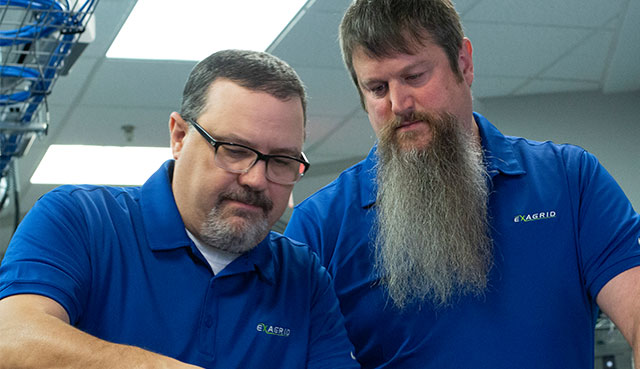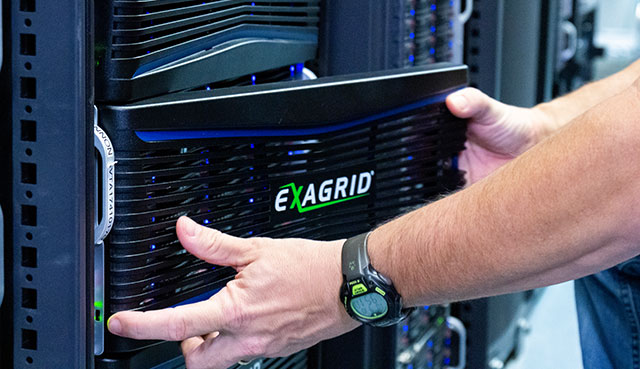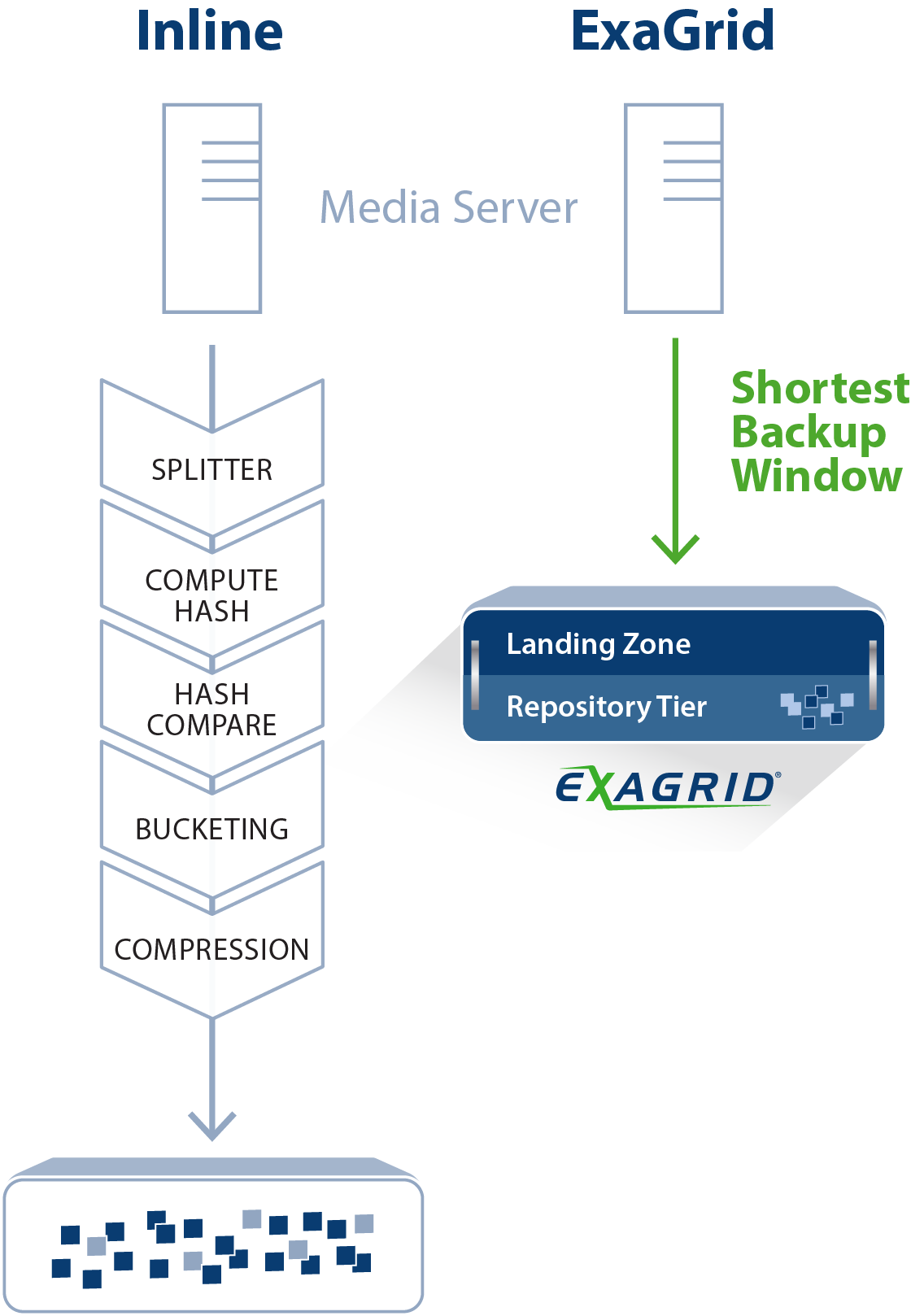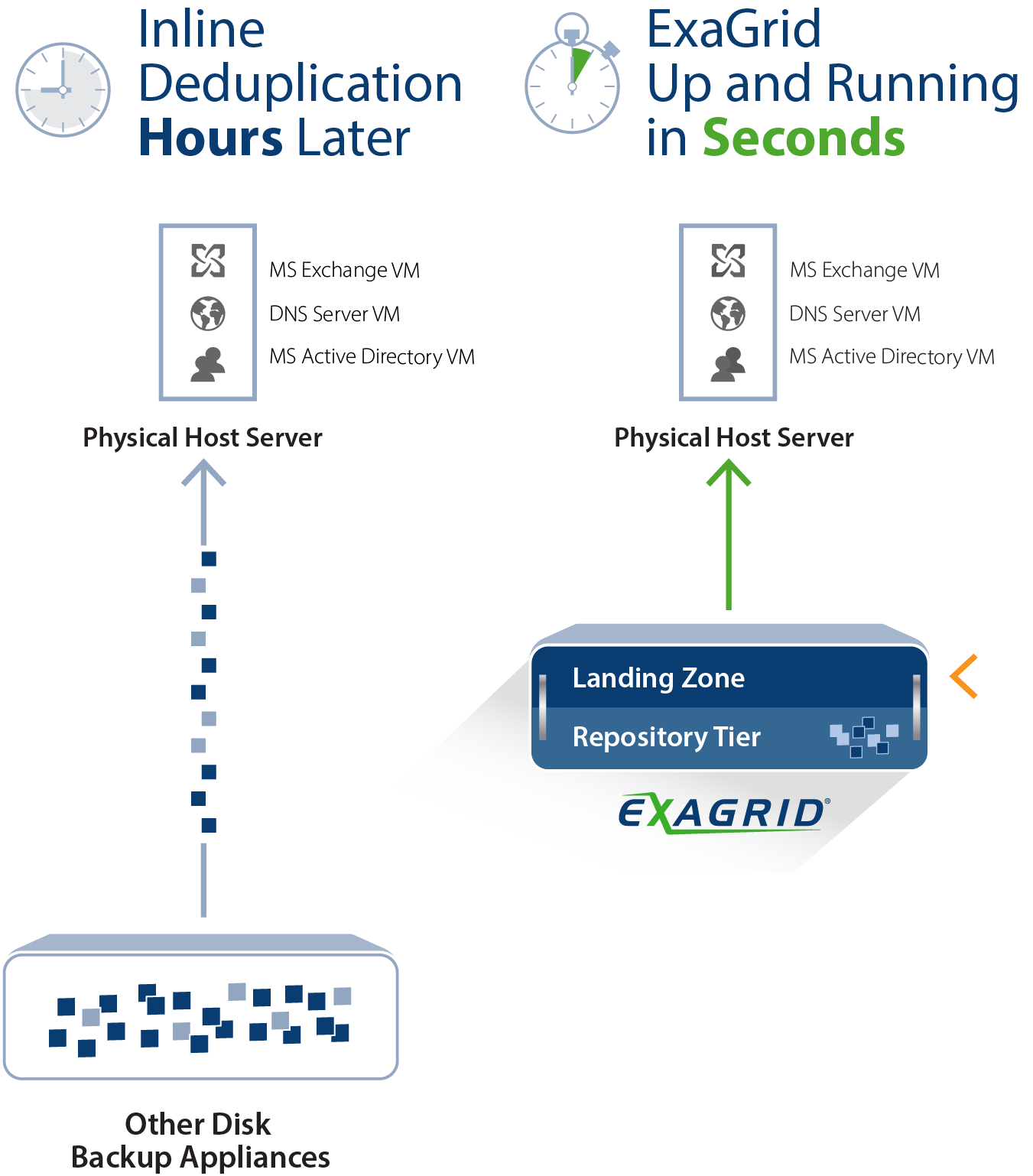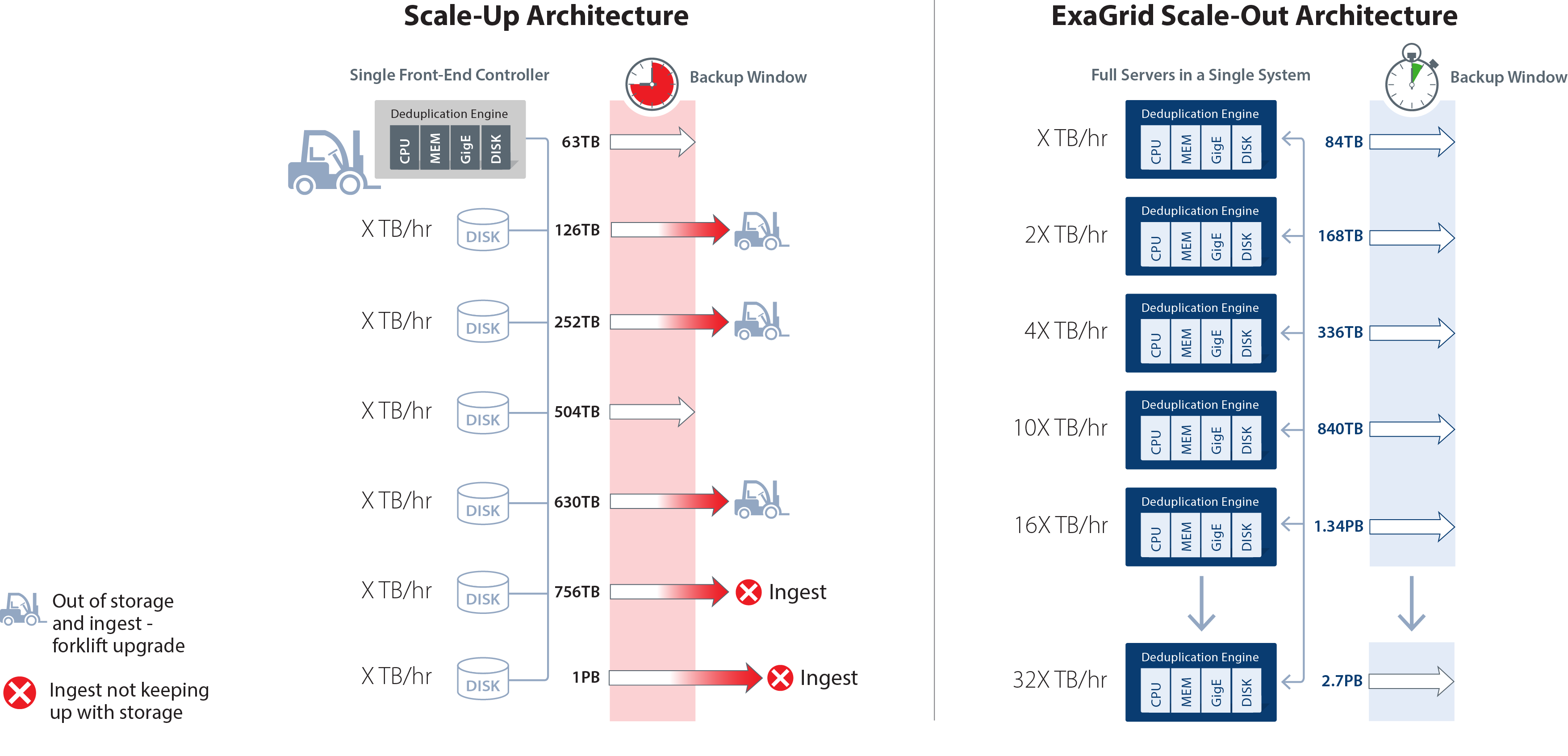ExaGrid’s Tiered Backup Storage has implemented a best of both worlds approach with a disk-cache Landing Zone for fast backups and restores tiered to a long-term deduplicated data repository. Each ExaGrid appliance has a unique Landing Zone where backups land straight to disk without any inline processing, so backups are fast and the backup window is short. ExaGrid is typically 3X faster for backup ingest. Deduplication and offsite replication occur in parallel with backups for a strong RPO (recovery point) and never impede the backup process as they are always second order priority. ExaGrid calls this “adaptive deduplication.”
Since backups write directly to the Landing Zone, the most recent backups are in their full undeduplicated form ready for any restore request, which is the same as it would be writing to any low-cost primary storage disk. Local restores, instant VM recoveries, audit copies, tape copies, and all other requests do not require rehydration and are as fast disk. As an example, instant VM recoveries occur in seconds to minutes versus hours when using the inline deduplication approach.
ExaGrid provides full appliances (processor, memory, bandwidth, and disk) in a scale-out system. As data grows, all resources are added including additional Landing Zone, bandwidth, processor, and memory as well as disk capacity. This keeps the backup window fixed in length regardless of data growth, which eliminates expensive forklift upgrades. Unlike the inline, scale-up approach where you need to guess at which sized front-end controller is required, the ExaGrid approach allows you to simply pay as you grow by adding the appropriate sized appliances as your data grows. ExaGrid offers eight appliance models, and any size or age appliance can be mixed and matched in a single system, which allows IT departments to buy compute and capacity as they need it. This evergreen approach also eliminates product obsolescence.
When architecting its appliances, ExaGrid thought through the implementation of the benefits of low-cost primary storage disk performance tiered to a long-term retention deduplicated data repository for the lowest costs. This approach is designed and optimized to provide the fastest backups, restores, recoveries, and tape copies; while permanently fixing the backup window length, even as data volumes grow; and eliminates forklift upgrades and product obsolescence, all while allowing IT staff the flexibility to buy what they need as they need it. ExaGrid’s appliances deliver 3X the backup performance, up to 20X the restore and VM boot performance, and a backup windows that stays fixed in length as data grows, all at the lowest cost.

